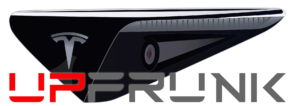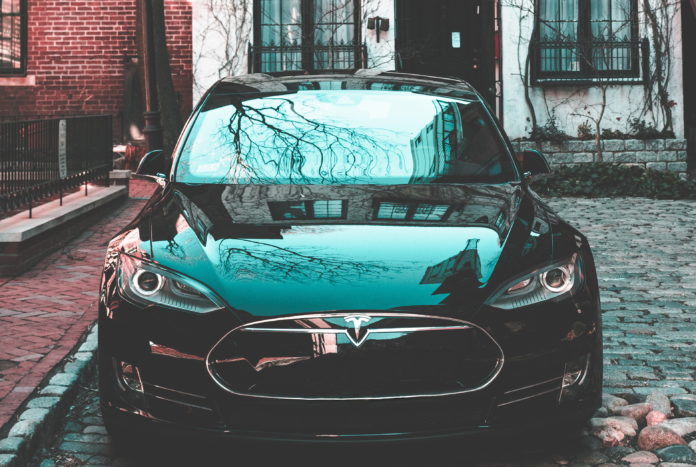For the majority of us, having a car that we can “fuel” at home by plugging it into a local power supply is a very new concept. We have for years been used to the idea of filling up at the gas station and then using it up day by day. Tesla owners in particular marvel at their car’s battery prowess, range and viability as a true challenger to the supremacy of gasoline and hybrid cars.
It’s not just charging that’s a new thing for owners of Teslas, however, but also the rather interesting but oddly familiar problem of “phantom drain.” Your car has become like your smartphone: it loses power, and by extension range miles, when it is parked and idle.
What is Phantom Drain?
This is a phenomenon common to most modern electronics that we have come to depend on, including smartphones, tablets and laptops. Essentially, it refers to the drain on the battery that occurs even when we are not using a particular device. We already understand, for example, that our smartphone will slowly drain of power as it sits idle. Where does it go? Notifications, background programs, alarms and other pre-programmed settings, and more. Even when we don’t pick up the phone and use it ourselves, the battery is being steadily drained by its background function.
The same thing happens with your Tesla. It’s a bit simplistic to just say your Tesla is like a giant smartphone, but in the sense that it runs many systems even when parked and idling overnight in the garage, it shares at least one thing in common with your smartphone.
The main source of confusion is that we tend to talk about battery power in terms of “miles”, but driving distance is not the only thing that uses power from the battery. In many cases, focusing on the battery charge level in terms of percentage instead of miles is a more effective way of looking at your battery.
Where Do Teslas Lose Their Power?
Exactly where within the Tesla is the phantom drain occurring? Tesla is using background power to do a number of things, including:
- Powering Sentry Mode: Sentry is by far the biggest offender when it comes to phantom drain. This is the system that monitors for suspicious activity going on around your Tesla. It alerts you, for example, if there is any excessive force being used (e.g., someone trying to break a window), or if someone is just leaning against the car. It then uses the camera to record these incidents and store them. It requires that the full computer system and cameras are active and prevents the car from going into a sleep state. All of this requires battery power to work.
- Monitoring Vehicle Temperature: Tesla models keep a constant watch on the ambient temperature, battery temperature and so on. It needs to know these things in order to then effectively pre-set the climate before the owner drives off as per owner preferences in the Tesla app.
- Maintaining an Internet Connection: A Tesla is an online, connected car. It depends on a consistent connection so that it can receive over-the-air updates and have necessary information downloaded for installation. This requires battery, even if it’s only a small amount while idling.
- Overheat Protection: Also related to temperature, Teslas operate with a cabin overheating protection feature that detects when the cabin goes over a predetermined safe level and activates cooling measures to bring the temperature down.
On average, a Tesla will lose between 1-2% per day of range to phantom drain, and possibly 1-2% per hour if it is parked with Sentry Mode active. Sentry is the largest of the phantom drainers since it is a fully functioning and active system using the computee, sensors and other equipment, as opposed to one that sits mostly dormant and only activates when certain very specific criteria are met.
How Can Phantom Drain Be Reduced?
There are several things that owners can do to reduce the effects of phantom drain.
Leave the car plugged in. If you are parked at home in your driveway or garage, leave it plugged in at all times. This is a good habit for many reasons, but if you are concerned about your battery draining, this will stop all other issues quickly. Leaving the car plugged in allows the Battery Management System to maintain the battery, but it also means all of the systems that cause phantom drain will pull power from your house instead of from the battery.
Limit the amount you access the Tesla app. You might think of the app as separate from the car, but actually the app works in sync with the car, and therefore when you are using it to check settings and data on the car, it has to activate various computers and other systems in order to get it. This adds drain to the battery. Like a screen saver, simply opening the app will wake up the car from sleep, and it will stay running for 10-15 minutes after the last activity. Only opening the app when you really need to use the car is a good policy.
Only use Sentry Mode in select locations. You might be worried about your Tesla and think using Sentry Mode is the best way to keep it secure. The fact is that if you are parked at home in your locked garage, then there’s no need for Sentry Mode. You can secure the garage with cameras and motion detectors that don’t require any battery power from your Tesla. Only use Sentry Mode when parking outdoors in areas where you are uncertain of security.
Limit the use of third-party apps. There are many apps available that can access your Tesla for information. Apps like TeslaFi, TeslaMate or Tezlab, mine oodles of data about your Tesla that you can then access and analyze to your heart’s content. These apps pause their requests to allow the computer to go to sleep before resuming and collecting more data while you are parked. If you have more than one running, they can interfere with each other and prevent the car from going into a low power mode.
Finally, don’t use climate preconditioning. There are a few bugs for them to work out with this system anyway. Preconditioning is great if you are plugged in, as it will use wall power to heat or cool the cabin and get the battery into a better state for use. But if you are not plugged in, it can preheat too early and waste power. If you leave your Tesla as it is, get into it a few minutes earlier and set the climate settings manually, then you’ll save the battery from phantom drain as it tries to get the right settings in advance.
Phantom Drain Exists, but it Needn’t be a Problem
Having said this, you may not want to take all of these steps. The usefulness of these features can often outweigh the inconvenience of losing a few miles. For the most part, if you are charging nightly, a few miles of range isn’t going to make a difference. On the rare occasions where you need to squeeze out every last bit of power from the battery (like when you are parked at an airport for an extended trip), you can employ these techniques to limit the impact.
With their super long range and powerful battery packs, Teslas don’t lose much of their viability as long-range electric vehicles even when you factor in phantom drain. Owners who are concerned about wasting power should employ the steps we suggest above, but they can at least rest easy knowing that phantom drain is not currently a big problem on their Tesla. They won’t wake up one morning to find their Tesla battery dead right before their commute or school run.


